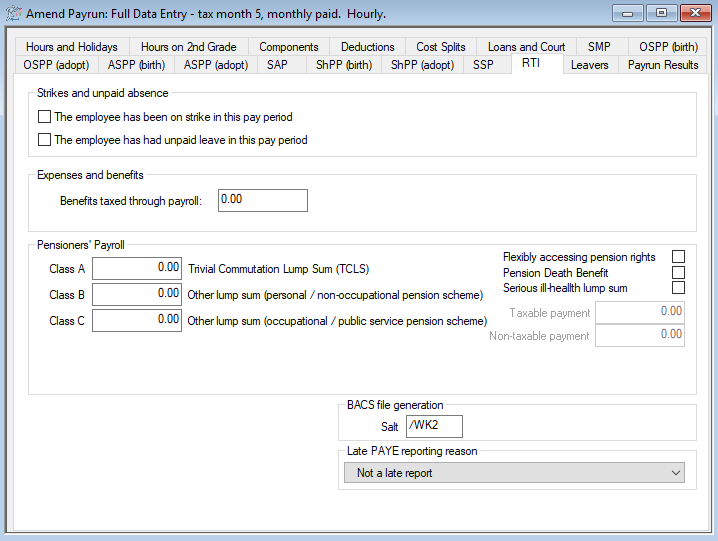RTI tab

This screen holds various flags to cater for additional data requirements for RTI transmissions. When pay runs are opened, these fields will default to being un-ticked (or blank)
Employee has been on strike / Employee has been on Unpaid Leave:- Payments that have been affected by unpaid absence or strike action may impact entitlement to Universal Credit when it is introduced and therefore this needs to be included in full payment submissions. If a payment has been affected in this way, these fields should be ticked accordingly.
Benefits taxed through Payroll:- Information regarding benefits that have been taxed through the payroll also need to be reported under RTI: This field will be populated from information held in the expenses module. If this module is not used, the values will need to be entered manually.
The RTI salt field is read only and refers to the entry that is contained within the BACS file as part of the hash code process. The code is generated at the time the run is opened and then each time the individual record is updated with entries that affect the net pay. Once the run is complete and the BACS and RTI transmissions are made, if it is necessary to send the full payment submission again the same hash codes will be reported in the RTI file as long as no changes have been made in the payrun.
Record a late reporting reason
There is a field available to allow you to capture a late reporting reason for the employee in the even that your RTI submission for them is after their payday.
-
Click on the Payrun icon.
-
Go to the Payrun menu and select Amend Payrun followed by Full Data Entry.
-
Click OK at the payrun reference screen, and go to the RTI tab.
-
Select the employee you wish to amend values for to using the navigation bar.

-
At the bottom of the screen you will see the Late PAYE Reporting Reason field.

-
Drop this field down and select the appropriate reason for submitting the RTI late for this employee. If you are unsure of which code to use, you should contact HMRC for guidance.

-
Click Save.